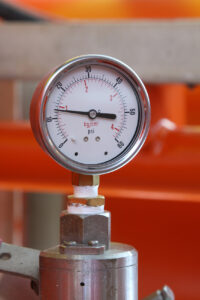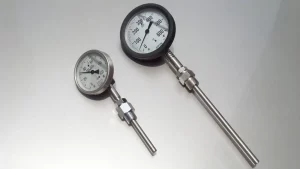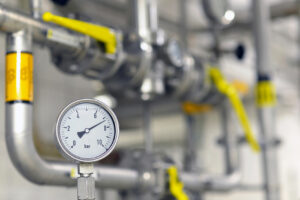Introduction
While pressure gauges may seem like simple mechanical devices, their precision and durability depend on often-overlooked engineering details. This article dares to explore what really makes some pressure gauges outperform others—from internal mechanisms to material science breakthroughs.
1. The Truth About Pressure Gauge Movement Mechanisms
1.1 The “Dead Zone” Phenomenon
- Most mechanical gauges have a 3-5° blind spot where initial pressure movement isn’t registered
- High-end gauges use laser-trimmed movement gears to reduce this to <1°
- Digital gauges eliminate this completely but suffer from sampling latency
1.2 Why Bourdon Tubes Actually Twist (Not Just Straighten)
- The common “straightening” explanation is oversimplified
- In reality, the tube undergoes complex elliptical deformation
- Premium gauges use cold-worked, stress-relieved alloys to maintain tube memory
2. Material Secrets of High-Performance Gauges
2.1 The Copper Alloy Myth
- While brass is common, it work-hardens after just 50,000 cycles
- Marine-grade gauges now use Monel 400—lasts 10x longer in saltwater
- Emerging trend: Amorphous metal alloys with zero crystalline fatigue
2.2 Glass vs. Polycarbonate—The Shattering Truth
- Tempered glass offers clarity but fails catastrophically at 150 psi impacts
- New hybrid laminated polymers withstand 600 psi bursts without fragmentation
- FDA-compliant gauges now use diamond-like carbon coatings to prevent scratching
3. Calibration Realities Most Suppliers Won’t Tell You
3.1 The “Disappearing Accuracy” Effect
- A ±1% accuracy gauge fresh from calibration drifts to ±2.5% in 6 months
- Military-spec gauges use micro-ratchet mechanisms to maintain ±0.25% for years
- Digital gauges aren’t immune—sensor drift requires quarterly recalibration
3.2 Why NIST Traceability Isn’t Enough
- Most certificates just prove the calibrator was accurate that day
- Cutting-edge labs now provide pressure history graphs showing stability over 30+ days
- The new ISO 9001:2025 standard will require this level of documentation
4. Extreme Environment Survival Tactics
4.1 The Vibration Kill Switch
- Standard liquid filling just delays gauge death by 20%
- Advanced designs incorporate:
- Magnetic damping (no fluid required)
- Tuned mass dampers that counteract specific frequencies
- MEMS accelerometers that auto-adjust needle resistance
4.2 Cryogenic Gauge Resurrection
- Traditional gauges fail at -40°F due to seal shrinkage
- New “shape memory” seals actually tighten as temperatures drop
- Some LNG gauges now incorporate self-heating circuits to maintain flexibility
5. The Future: What’s Coming in Pressure Measurement
5.1 Self-Diagnosing Gauges
- MEMS sensors that track wear on movement components
- Cloud-connected gauges that predict failure 200 operating hours in advance
- Color-changing indicators when media contamination is detected
5.2 The Graphene Revolution
- Single-atom-thick bourdon tubes with zero hysteresis
- Transparent strain sensors embedded in the dial face
- Self-powered gauges using piezoelectric pressure harvesting
Conclusion: Beyond the Dial
The next generation of pressure gauges won’t just measure pressure—they’ll understand it. With innovations from metamaterials to AI-assisted calibration, what was once a simple indicator is becoming the smartest device on your piping system.



